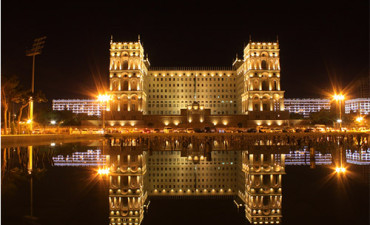Fire Temple “Ateshgah”
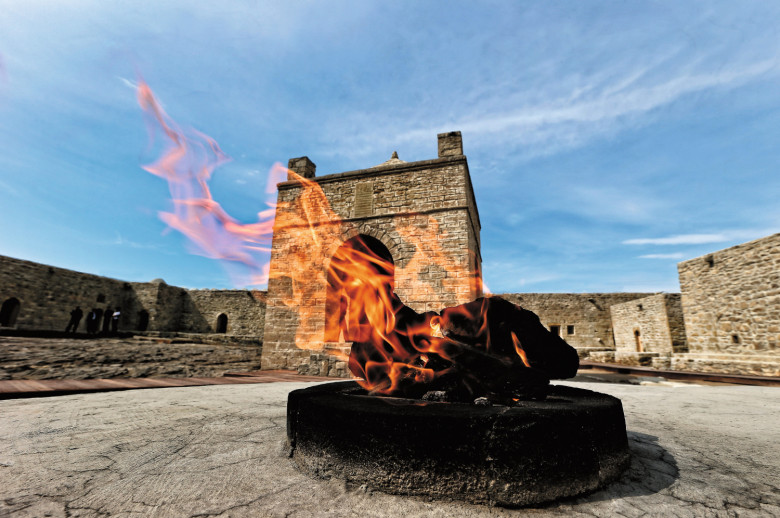
Situated in the core of Azerbaijan, amidst the dry expanses of the Absheron Peninsula, Ateshgah stands as a sanctuary of ancient flames, a living testament to the timeless practice of fire worship. The name Ateshgah, originating from the Persian term "Atash," signifying "fire," perfectly encapsulates the profound significance of this remarkable temple. This sacred site is a captivating fusion of historical richness and spiritual reverence, offering a unique glimpse into the enduring cultural heritage of the region.
The Temple of Fire Ateshgah stands as a site of mesmerizing beauty and deep spiritual importance. For centuries, the flickering flames within the temple have served as a guiding light, leading pilgrims and travelers on a journey towards spiritual enlightenment. This sacred space not only captivates with its awe-inspiring aesthetics but also carries a rich history, marking it as a destination where the convergence of cultural heritage and spiritual exploration takes place.
Throughout the ages, humanity has been both terrified and captivated by the enchanting magic of fire. Long before the advent of Islam or Christianity, people sought entities to worship, and it was only natural that seekers of truth were drawn to the mesmerizing allure of fire, much like a moth to a flame. The religious practice of fire worship, particularly in the context of Zoroastrianism, left an indelible mark on Azerbaijan's cultural heritage.
In a historical juncture, Hindu Brahmanites and Persian Zoroastrians caught wind of a mystical land where flames seemingly emerged from the very earth itself. Intrigued by this phenomenon, they embarked on a journey to Azerbaijan. Overwhelmed and inspired by the extraordinary sight, they decided to commemorate the spot with a temple, proudly naming it Ateshgah, acknowledging the significance of the largest concentration of fire in the area.
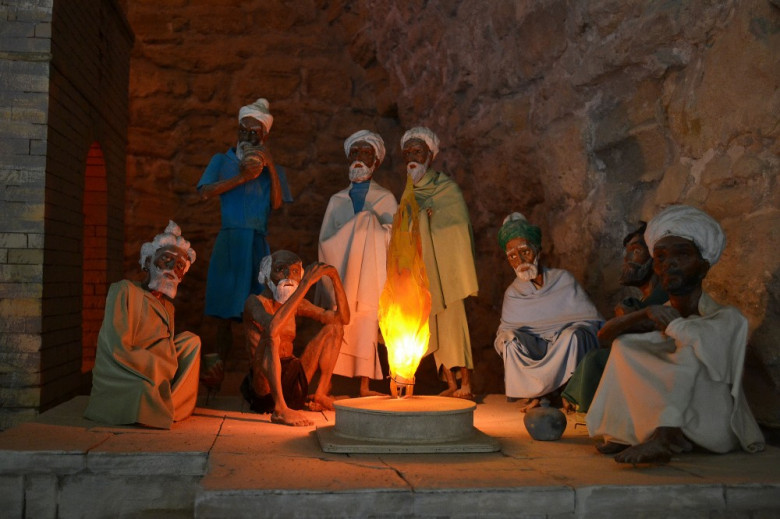
As time unfolded, Ateshgah evolved into a vibrant pilgrimage hub, attracting followers from diverse religious backgrounds, including Zoroastrians, Hindus, and Sikhs. These pilgrims revered the eternal flames as a tangible manifestation of the divine, transforming Ateshgah into a sacred crossroads where various faiths converged in awe of the mystical and enduring power of fire.
The distinctive architecture of the temple mirrors the harmonious synthesis of Hindu and Zoroastrian influences, encapsulating the fusion of diverse faiths. At the core of the temple, a pentagonal courtyard serves as the focal point, encircled by cloistered cells that once accommodated pilgrims and priests. This architectural manifestation not only testifies to the coexistence of different religious traditions but also stands as a tangible representation of the cultural amalgamation that took place at the sacred site of Ateshgah.
At the heart of the temple stands the focal point: the altar sanctuary, a magnificent structure adorned with elaborate carvings and accompanied by seven burning altars. The perpetual flames, sustained by natural gas, gracefully dance and sway, casting an otherworldly glow that embellishes the walls of the temple. This mesmerizing spectacle not only adds to the visual allure of the sanctuary but also symbolizes the enduring connection between the sacred and the elemental, creating an atmosphere of profound spiritual significance.
Situated not far from this temple were intersecting roads of the Great Silk Road, transforming the sacred space into more than a religious sanctuary—it became a bustling caravanserai. Ateshgah's pivotal location attracted traders from around the world, propelling its prosperity across many centuries. The merchants, whose primary focus was commerce, inadvertently fueled the temple's flourishing state by supplying it with financial resources.
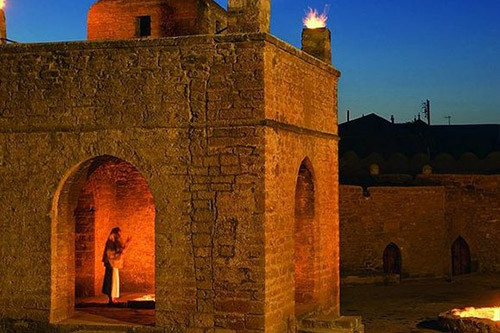
In an era where merchants were not particularly devout, often invoking thoughts of the divine only in times of distress along the arduous caravan routes, the temple took on an additional role. The hazardous nature of the merchants' profession, with journeys spanning half a year and laden with various challenges and stresses, led them to seek solace in the prayers of the Hindu and Zoroastrian ascetic hermits who founded the temple. In return for these entreaties offered in the mornings and evenings, the merchants generously compensated the ascetics.
The ascetics themselves harbored no interest in accumulating wealth; their aspirations within the temple's confines revolved around solitude, as they sought the path to Nirvana—both an earthly and posthumous paradise, considered the pinnacle of merit across numerous earthly incarnations.
The belief persisted that the gods favored the prayers of hermits over those of mundane merchants. In this symbiotic relationship, everyone benefited: the hermits advanced towards holiness through their prayers, the merchants gained assurance and divine intervention, and the temple prospered. For an extended period, Ateshgah stood as one of the preeminent centers of Zoroastrianism in the Middle East.
In the present day, Ateshgah stands as a reverent custodian of age-old traditions, its flames flickering like steadfast beacons of enduring faith. From every corner of the world, visitors are captivated by its mystique, drawn to seek solace and inspiration within the sacred confines of the temple. The harmonious fusion of spirituality, historical significance, and architectural splendor at Ateshgah renders it an indispensable destination for those in search of a profound and enriching cultural experience. If you aspire to embark on a journey to this enchanting place, we recommend exploring our Gobustan-Absheron Tour for an immersive exploration of the region's rich heritage.
Tags: Persian - Zoroastrians , Azerbaijan , Ateshgah , Great silk road , Hindu , The ascetics , Nirvana , Temple , Gobustan Absheron
Recent Posts
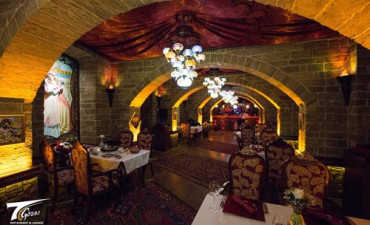
Buy any tour and get 15 percent discount in Baku restaurants

Festivals In Azerbaijan

Great Silk Road In Azerbaijan

Guide to outdoor activities
